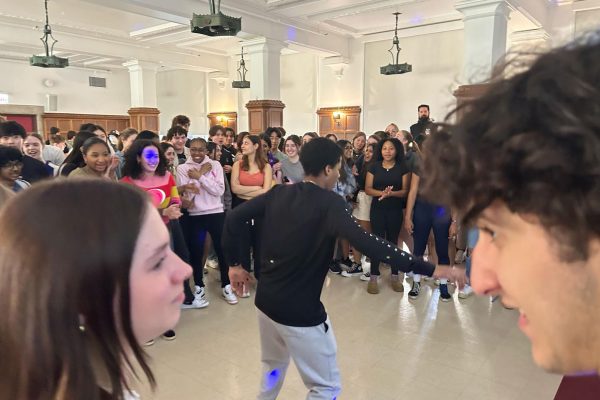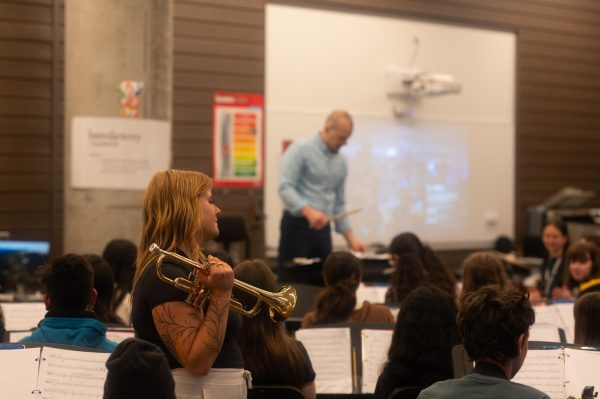Taylor Swift’s second album of the year ‘Evermore’ shifts away from her light hearted pop scene
Taylor Swift
Taylor Swifts ‘Evermore’ is the stand alone album that came out on December 11 2020, and distinguishes itself from her other albums through its sophistication.
In 2019, photographs of seven palm trees and seven stairs hinted at the release of Taylor Swift’s seventh studio album, “Lover.” For days, or even weeks, Swift had fans anticipating the drop of a new album. But in 2020, nothing like that happened.
Following the surprise release of “Folklore,” which debuted in July, Swift released another album just five months later. “Evermore,” now available for streaming on Spotify and Apple Music, is a stand-alone album, but referred to by Swift herself as a “sister album” to “Folklore” and builds on the gothic and folk aesthetic in a more mature and developed manner than her previous work.
The momentum of the massively-successful “Folklore” gave Swift and her team incredible flexibility to experiment and do whatever they wanted. She is working again with Jack Antonoff, Aaron Dessner and Bon Iver’s Justin Vernon.
The slightly-wicked country ballad “No Body, No Crime” contrasts the more upbeat “Gold Rush,” which is closer in style to the pop-oriented album “Lover.” Contrast is also shown in “Dorothea,” where Swift sweetly sings against a honky-tonk piano, and in a complete opposite direction her voice is artificially distorted in “Closure,” where a vocal modifier transforms her sweet tone into a robotic growl.
In past albums, such as 2017’s “Reputation,” her typical approach to incorporating new sounds was to go all out, where almost every track on the album utilized the same specific technique or sound. But with “Evermore,” she is more subtle and sophisticated when incorporating new techniques, mirroring her best and most curated lyrics.
In 2012 Swift released the single, “Ronan,” inspired by blogger Maya Thompson’s four-year-old son’s fatal battle with childhood cancer: “You were my best four years,” Swift softly sings. “I remember your bare feet down the hallway. I love you to the moon and back.” The soft and melancholy tone of “Ronan,” is revived in the eulogy of “Marjorie,” which presents her grandmother, Marjorie Finley, as an incredible force, but with a story that never can be completely told. “What died didn’t stay dead. You’re alive, you’re alive in my head,” Swift sings, praising the legacy of her grandmother, but also painting the pain of losing someone when you’re too young to understand their full wisdom.
Like most of her previous albums, most notably 2010’s “Speak Now,” Swift still focuses around songs that tell a story. “Evermore” introduces new characters to join the ones from Folklore. “’Tis the Damn Season” introduced Dorthea, a Hollywood actress reuniting with a high school flame in a tryst. In “Dorthea,” his side of the story is told, as he begs for closure. “A tiny screen’s the only place I see you now, and I got nothing but well wishes for ya,” flipping the pattern of a teenage love triangle with a happy ending, as we hear in “Folklore.”
“Betty,” from Folklore, tells the story of a love triangle between high school lovers that were broken apart by a rumor and are trying to rekindle their relationship. The song ends with: “Standing in your cardigan, kissing in my car again, stopped at a streetlight, you know I miss you,” which ties a perfect bow around the messy breakup. However, on “Tolerate It,” from “Evermore,” one person’s love is met with coldhearted indifference. “I made you my temple, my mural, my sky. Now I’m begging for footnotes in the story of your life, drawing hearts in the byline,” Swift sings, making the rejection sound like it’s worse than death.
So there’s not really a neat or happy conclusion for the characters in “Evermore,” which could allude to Swift still figuring out the next stage of her life with uncertainty.
This hypothesis is displayed in “Happiness,” where she sings: “I was dancing when the music stopped, and in the disbelief I can’t face reinvention. I haven’t met the new me yet.” This song touches on subtle feelings of forgiveness and realizing someone can look different in different lights, a stark contrast from the 2006 song, “I’d Lie,” about a girl who’s secretly in love with someone but covers their feelings.
While Swift can still write fairy tale love stories, “Evermore” distinguishes a shift away from lighthearted pop to a more sophisticated and mature style.

















